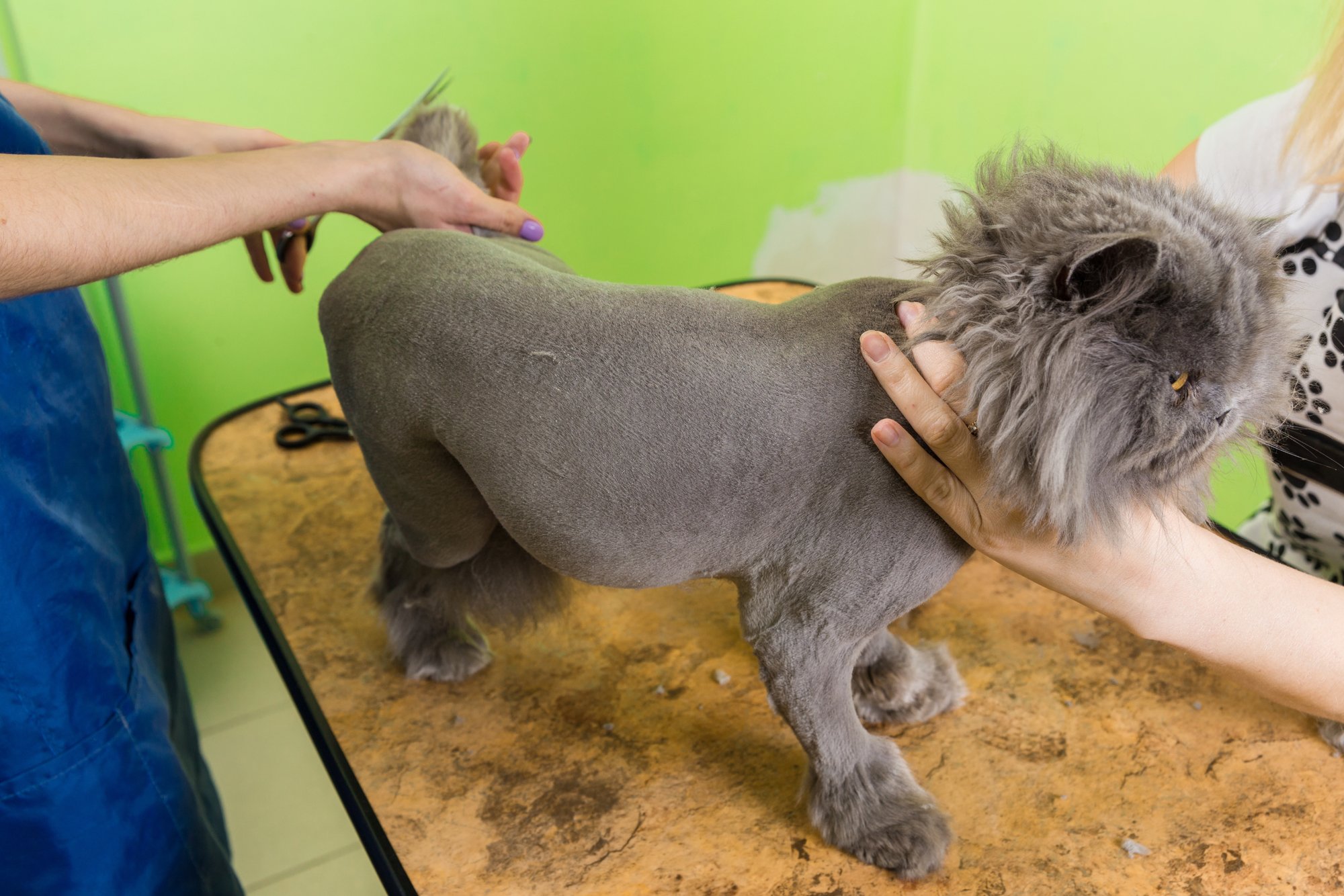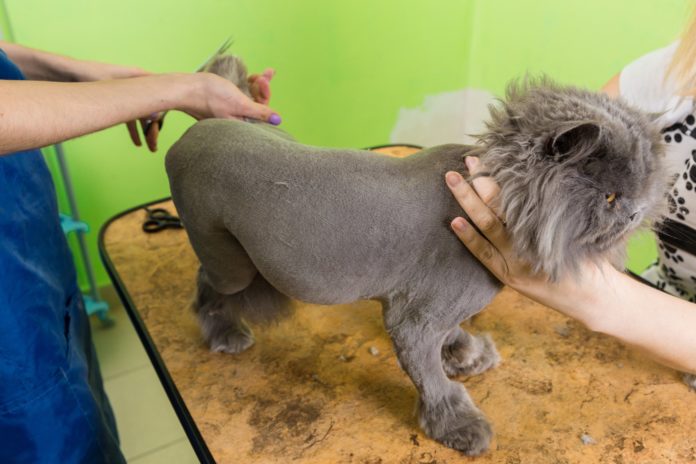Aksakal | Deposit Photos

Many cat lovers know the awful feeling of waking up from a deep sleep to the sound of their cat gagging and retching to throw up a hairball or stepping on a fresh hairball on the carpet with bare feet. Not pleasant! While most hairballs are a nuisance, some can signal or cause serious health problems.
A hairball, also called a trichobezoar, is a clump of hair wadded up in a cat’s gastrointestinal tract. They are usually tube-shaped (from traveling up the narrow esophagus) and an inch or two long. Dried out, they can look like feces.
Hair is mainly keratin, which cats cannot digest. Most hair simply passes through the digestive tract and into feces. Some larger amounts, however, can accumulate in the stomach, especially in a cat with gastric motility abnormalities.
Cats spend about 25 percent of their waking hours grooming, licking, and chewing at hair. More hair is consumed during shedding times and after a bath (if not dried and combed thoroughly). Longhair cats like Persians and Maine Coon Cats swallow even more hair.
One survey found that although slightly over 70 percent of all shorthair cats never threw up hairballs, 55 percent of longhair cats threw up hairballs more than twice a year. So, if your cat is throwing up a hairball more than a couple of times a year, you should discuss this with your veterinarian to be sure she’s healthy.
Normal or Not?
Hairballs can cause obstructions, both at the pylorus (exit from the stomach) or in the small intestine. Less commonly, hairballs may cause obstructions in the esophagus when a cat unsuccessfully tries to vomit a large hairball. Occasionally, large hairballs may be palpated in the stomach. In one study, about 36 percent of the foreign bodies in the GI tracts of cats were found to be hairballs.
If a hairball is causing an obstruction, your cat may stop eating. Poor GI absorption of nutrients and possible dehydration can occur secondary to a hairball problem. Left in the stomach long enough to build up to a large size, hairballs can cause gastric retention syndrome—preventing food and water from passing into the intestines. If present long enough, damage may be done to the nerves that regulate gastric emptying.
Diagnosis
Diagnosis depends heavily on the history you can provide. Bring a hairball sample to your veterinarian, if you can. Your veterinarian may suspect a hairball in the stomach by palpation, but further diagnostics—endoscopy, a radiograph (possibly with a dye study), or an ultrasound—will be needed. Firm masses may require surgery.
Prevention
Groom your cat weekly, or daily for long-haired cats. Most cats prefer brushes like slickers, which have metal teeth that slant backward, somewhat mimicking a cat’s tongue. These brushes are excellent for shorthair cats. For a longhair cat, you may need to use a comb on the long feathers and back hair. Matted areas may require a mat splitter or even a shave with clippers, at least in those areas. Mats can be painful, as they can pull at the skin. Removing them requires patience and skill to avoid cutting or injuring your cat.
If you own a long hair cat who can’t be convinced that grooming is in her best interest—despite your efforts to associate good things like treats with grooming—you may need to have your cat professionally groomed. Some cats will allow a groomer to shave them while others need sedation. Generally, twice a year will keep your cat comfortable if she needs to be clipped by a professional groomer.
Diet Choices
Special “hairball diets” incorporate extra fiber to move the hairball through the gastrointestinal tract. The goal is increased gastric emptying and motility. Your veterinarian may prescribe one of these diets if your cat has recurring hairball problems. Adding some plain (no spices!) canned pumpkin to wet food may help cats with only occasional hairball buildups. Start small, then work up to a half to a full teaspoon a day.
Hairball medications are lubricants designed to help any developing hairballs slide through. Because these have oils, we suggest you use veterinary formulated preparations that will replace any fat-soluble vitamins such as vitamin A that your cat may also lose from these treatments. Plain petroleum jelly may cause problems for your cat if frequently given orally, and oral mineral oil administration should be avoided due to the possibility of it being inhaled by the cat, which can result in lipoid pneumonia.
Your veterinarian may also suggest a prescription medication such as metoclopramide, or off label use of a drug called cisapride, to enhance gastric and intestinal motility.




